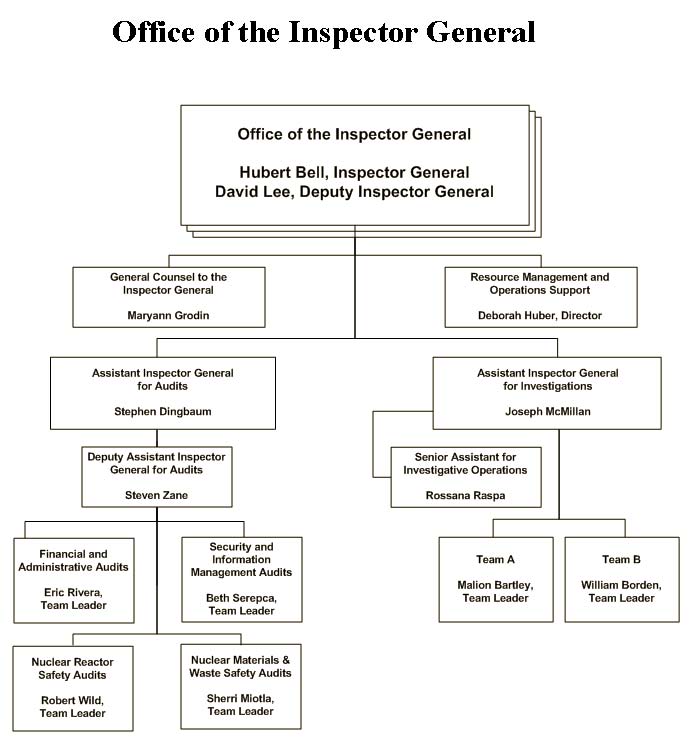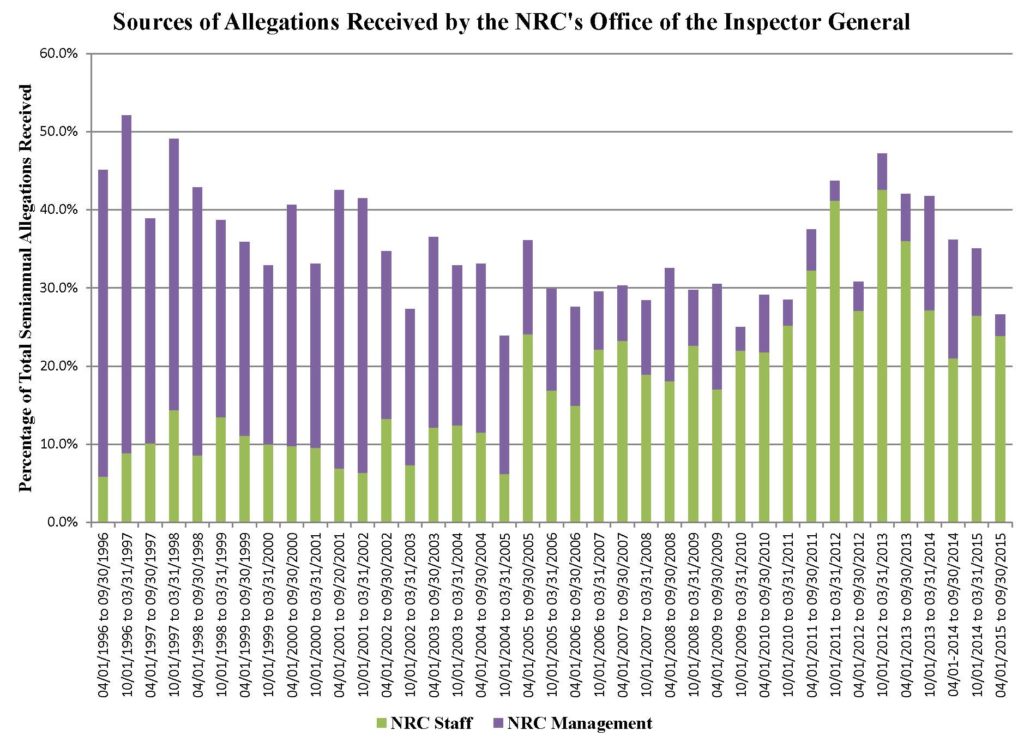The Nuclear Regulatory Commission (NRC) has exclusive authority over nuclear power plant safety in the United States. The NRC asserts this authority by establishing and enforcing regulations intended to manage the risks from nuclear power plants to an acceptably low level. The NRC sanctions plant owners for violations of regulatory requirements. It is essentially the nuclear cop on the nuclear safety beat.
When the cops themselves may have crossed the line, Internal Affairs investigate. Similarly, the Office of the Inspector General (OIG) functions to ensure the NRC is faithfully and effectively fulfilling its public guardian role. The OIG issues semi-annual reports to the US Congress. I reviewed the reports covering the period between April 1, 1996, and September 30, 2015. I wasn’t sure what insights I’d gain from reviewing these reports (otherwise, I’d have skipped that reading and proceeded directly to this writing.)
Inspector General Background
The NRC’s Inspector General is nominated by the President and confirmed by the Senate. The OIG consists of two sections. One section audits NRC processes (e.g., the Reactor Oversight Process’s baseline inspection program, the oversight of spent fuel pool safety, and how the agency responds to requests under the Freedom of Information Act). The other section investigates allegations of wrongdoing by the NRC staff.

Fig. 1 (Source: Nuclear Regulatory Commission)
The OIG’s audit section currently consists of about 40 individuals while about 20 individuals work in the investigation section. The OIG received about 80 to 160 every six months. Incoming allegations frequently but not always get handled by the investigations staff—an upcoming audit may cover the area.

Fig. 2 (Source: Union of Concerned Scientists)
You can sign up to automatically receive emails about future reports issued by the OIG.
Sources of Allegations to OIG
OIG receives allegations from a range of sources: NRC managers (18.9%), NRC employees (17.6%), NRC contractors (1.6%), Congress Members and staff (0.8%), media representatives (0.6%), industry representatives (3.7%), intervenors (3.1%), other government agencies (2.1%), members of the public (24.6%), anonymous submitters (16.5%) and OIG itself (10.3%). The percentages reflect the fraction of allegations received by OIG between April 1, 1996, and September 30, 2015. NOTE: The allegations initiated by OIG reflect times such as when individuals conducting an audit into an area uncover or are told about alleged wrongdoing outside the scope of that audit.
I don’t know what I expected for the volume of allegations made by industry to OIG, but I probably would have guessed it would have been higher than 3.7%. Industry representatives often publicly bemoan the NRC being overly aggressive, ratcheting up requirements, improperly imposing new requirements, and taking too long to approve license amendment requests. And it is unlikely that many of the anonymous allegations came from shy industry representatives—even the NRC staff can figure out that when OIG begins investigating allegations of overzealous oversight at the Springfield Nuclear Plant, the concerns didn’t come from the gang at the Acme Nuclear Plant down the road. The industry likely has venues other than OIG to handle their complaints.
Opposing NRC Management vs. Staff Trends
The most startling revelation was the downward trend in allegations received by OIG from NRC managers and the rising trend in allegations from NRC employees (presumably broken out by OIG as non-management employees since NRC managers are employees, too). NRC managers supplied nearly 40% of the allegations circa 1997 but now routinely only account for less than 5%. NRC employees, on the other hand, supplied less than 10% of the allegations circa 19967 but now provide over 25%.

Fig. 3 (Source: Union of Concerned Scientists)
Overall, the percentage of allegations the OIG received from NRC staff has been about 30 percent, give or take a little now and again. I don’t know what to make of the opposing trends. They might reflect that workers went to their supervisors with concerns back in the 1990s and the supervisors transmitted applicable issues to OIG on their behalf and that workers took increasing advantage of OIG’s “self service” windows over the years.

Fig. 4 (Source: Union of Concerned Scientists)
The opposing trends must mean something. I just cannot figure out what the data is trying to tell me. I’ll give $5 to the first person who proves conclusively what the opposing trends mean.
Bottom Line
One of the tasks in my FY16 nuclear safety project workplan was to review OIG records and write a report about the insights gleaned from that effort. But when you cannot make heads or tails of the most startling finding, it doesn’t bode well for the non-startling findings. My boss agreed that this blog commentary would be a suitable surrogate for the workplan’s report task.
While I cannot quantify OIG’s value or explain trends, I can point to stellar results achieved by OIG, including but not limited to its audit of the NRC’s oversight of aging safety components, its examination of how the NRC handled the steam generator replacements at San Onofre, and its triennial surveys of the NRC’s safety culture.
OIG’s efforts help the NRC sustain good performance and reduce bad performance.
